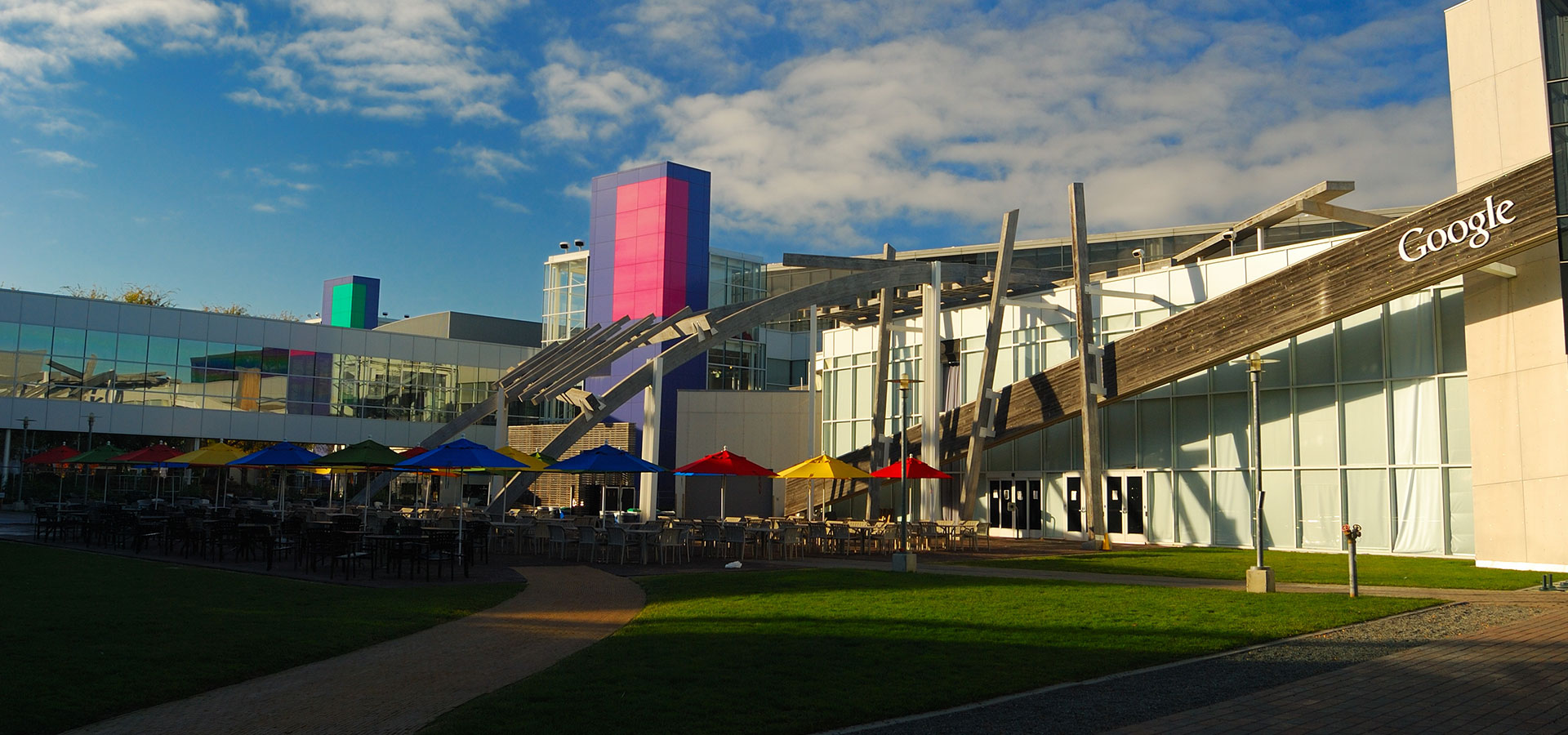

Shawn Parr
The Intersection Event Is Where Innovation And Social Change Meet
There has been a lot of talk about “intersections” lately—intersections of business and art, intersections of marketing and nature, intersections of technology and health, and so on.
I recently became involved in a conversation about intersections through the new annual event, The Intersection Event, which examines the intersection between business innovation and social change. This year’s event was set inside of Pixar Animation Studios, and next year’s is slated to be held in January at the Googleplex. But more interesting than their backdrops, which are arguably among the most creative in the country, is the question they’re trying to answer: “Can business innovation and social change effectively create a symbiotic relationship?”
I recently had the opportunity to chat with the founder, Randy Haykin, to learn more about this interesting intersection.
SHAWN PARR: How do you define the intersection of innovation and social change?
RANDY HAYKIN: A great question because the idea of holding an event called “The Intersection” seems to be hitting a chord with a lot of people—they recognize that business innovation and social change are related… but how? As an entrepreneur, teacher, and mentor to startups over the years, I’ve seen hundreds of examples of business innovation—in both large and small startups. In the past, much of this innovation has been targeted to making better, faster, cheaper products and services. More products, more companies, and more investments equal more money. Unfortunately, innovation has not been focused on a better lifestyle, improved standard of living, healthy environment, or a safe world for billions of people who live below the poverty line around the world.
As a professor working with many of tomorrow’s future leaders at UC Berkeley and University of Cambridge, I’ve noticed a change in the past five years. Many students no longer just ask, “How can I make more money?” Increasingly, they are beginning to ask, “How can I make the greatest impact?”
Meanwhile, environmental concerns and poverty have caused many global corporations to focus on “CSR” (Corporate Social Responsibility) and take responsibility for outcomes beyond profits, such as community, environment, and education. That means the focus both at a university and a corporate level has shifted. We will see a swing in global consciousness as a new set of social entrepreneurs use innovation to effect positive social change. The swing in consciousness is the intersection between innovation and social change. The new consciousness says, “How can I use new innovative models, products, practices, and thinking to impact those issues that are our greatest enemies as human beings?”
With all the changes going on, it is easy to observe examples of the intersection of innovation and social change in all walks of life. Examples of this are already in play: Innovations in social media affect political balance (think Egypt, Syria, and the IAVA); innovations in technology affect biotech, agriculture, food and oil production (think Water.org or Solazyme); innovations in business models affect the ways that goods and services from Africa, India, and Latin America can be brought to the rest of the world (think Kiva.org or World of Good), and there is so much more that it’s dizzying to keep up with it each week.
How do you think social innovation will influence the future?
We are already seeing signs of this. The first wave was the outsourcing of labor among countries in the 1980s. In the 1990s we began to see that the world was interconnected financially and via the Internet. We’ve transformed in the first decade of this century to a truly global economy, one in which companies do create and sell their products on a global scale and, unfortunately, one in which a “sneeze” in Greece affects the entire global financial scene. Today we are seeing that the effects of the Internet, communication technologies, and social media are transforming the way teams, companies, countries, and continents relate to one another. We are living in a time where there is the potential for rapid social change unlike any other in history.
Against this backdrop, innovation has the potential to shape the future of most of the major social issues of our time. Take global health, for example. Using innovative technologies and techniques, the Gates Foundation has been able to nearly eradicate polio by focusing on multi-national and holistic solutions. The same is true in education. The old collegiate system of the past is about to crumble in the next 10 years and university “brands” are likely to give way to new, nimble ways of educating people—it’s the experience that the university provides which will be valued, rather than the diploma or brand. The same will be the case for poverty issues, environmental concerns, and energy consumption.
How do you predict The Intersection Event will shape that future?
The Intersection Event is developed by The Gratitude Network as a means of bringing together innovative thinkers from a variety of fields who have an interest in making a difference. The Gratitude Network was designed to fund social entrepreneurs who have revolutionary ideas that can have local, regional, or national impact on social issues.
The Intersection is a unique way to bring together thought leaders from a variety of fields and draw out the intersections in thinking that are most likely to lead to new discoveries, ways of thinking, relationships, and connections. We’ve designed this event to cover a variety of topics from personal innovation to team creativity to entrepreneurial innovation and then look at ways in which each of these areas impacts social change.
What is the most important lesson you’ve learned?
I used to think “creativity” meant Picasso. What I now know is that some of the most creative energy on the planet is bundled up in the minds of our founders, entrepreneurs, and young leaders. Entrepreneurial spirit has positively affected the U.S. economy dramatically in the past 40 years, and I think it will drive economies in the future. Those parts of the world that apply new rules of how to intersect with entrepreneurs, by providing the best environment for them to operate out of, will be the long-term growth economies of the 21st century.
What are the most important benchmarks for social innovation?
In the last few centuries, major technological inventions—the birth of automotive and aviation industries, the invention of the telephone, the discovery of DNA—have played a role in social change. But these inventions were not driven by a desire for social change. They produced a social outcome as a by-product. They were mostly inspired by scientific achievement, discovery, or the profit motive. We can look at milestones in terms of technology, applications of this technology, or ways in which the applications were enabled by a system of funding.
The system of funding intrigues me as a former Venture Capitalist the most. The old method of appropriation was public funding. But in the U.S. today, it is clear that this is no longer working. We cannot solve our present social issues in this country or elsewhere around the world through the use of public funds or government agencies. Bipartisan issues now bog down any progress we can conceive of.
To me, new forms of innovative funding are the drivers. The following is a list of financial innovations we’ve seen in the past 40 years in the area of social change:
1976: Grameen Bank & Opportunity International founded
1981: Ashoka founded by Bill Drayton
2001: Acumen Fund founded by Jacqueline Novogratz
2004: Facebook founded by Mark Zuckerberg
2005: Kiva founded by Matt Flannery & Jessica Jackley
What philosophy is at the heart of your organization?
Some of the greatest inventions the world has seen were developed incrementally as one person built on another’s ideas, sometimes transcending decades or even centuries between them. What makes for real innovation is that someone takes a previous idea and juxtaposes it in new light, or with a new twist, or in a new context. That means finding the intersection between the original observation or thought and the new environment or situation. The most fertile areas for innovation—and the most new ideas—are likely to occur at the intersection of several great minds.
Photo: Yang and Yun


Uncommon Person: Chad Hutson

Our Internal Learning & Impact at Bulldog Drummond

The One Decision by Employers in 2021 that Means Everything

What I Wish I Knew

Standing Up Inside

Uncommon Person: Gregg Imamoto

Five Things Every Company Should Know about ESG

Redefining Value

Uncommon Person: Chris Baréz-Brown

It’s Time For A Whole Lotta Common Good

Did You Choose Humanity?

Uncommon Partnership: Violux

Here’s How

Uncommon Person: Santhosh Nair

Designing Strategy For A Complex World

Responsibility & Relevance for Brands
